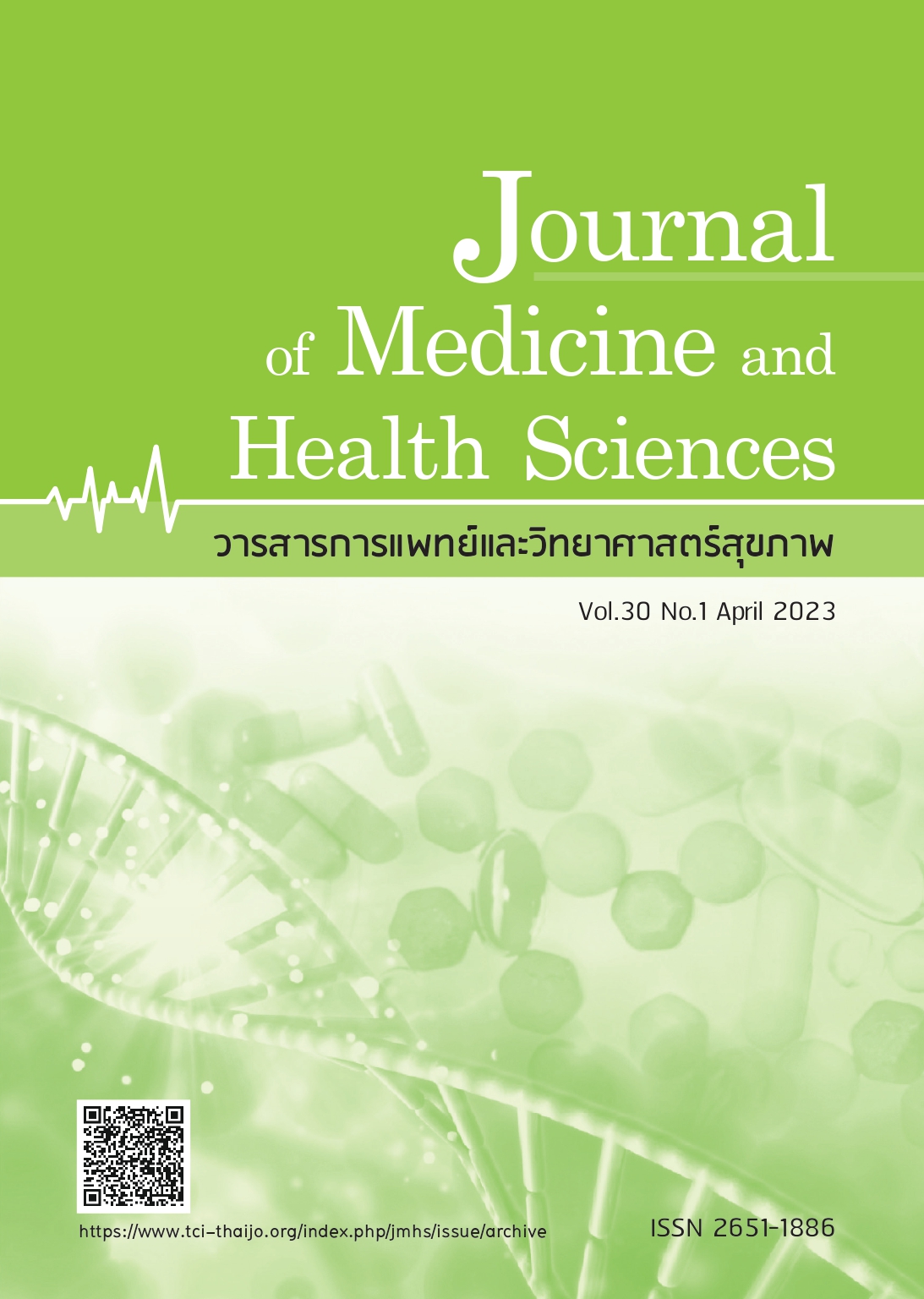Pelvic phantom for practical training of cervical cancer brachytherapy
Keywords:
Cervical cancer, Brachytherapy, Pelvic phantom, Para rubber phantomAbstract
The medical phantom is very important for students and medical staff to improve both learning outcomes and their clinical skills. The objective of this study is to develop the para rubber pelvic phantom for instruction and clinical practice in brachytherapy for cervical cancer. The pelvic phantom was composed of two parts, the right and the left. Each part of the phantom has pelvic bones and essential organ cavities, including the uterus, vagina, bladder, and rectum. The pelvic bones were constructed and inserted in the phantom for radiation imaging purpose. The mould blocks were produced using plaster and silicone. In the subsequent stage, the phantom was constructed using the para rubber and a vulcanization technique. In the final step, the phantom was evaluated by radiologic technologist students and staff in radiotherapy departments. The results shows pelvic phantom which construct for learning clinical practice training in brachytherapy to demonstrate the treatment procedures, radiography, and radiation treatment planning for cervical cancer. The evaluation of the phantom revealed an overall high level of satisfaction with the average score for radiotherapy staff, and radiologic technologist students were 4.21±0.63 and 3.96±0.68. In summary, the pelvic phantom is easy method and low cost. It is plays an essential role in studying and training, and it can be used for practical training of cervical cancer treatment in brachytherapy. With correctly and safety.
References
Seri K, Teerasak P, Kajohn K, et al.
Comparative anatomical teaching aids of
bovine reproductive organs between para
rubber models and real specimens.
Proceedings of 41th Kasetsart university
annual conference : Animal, veterinary
medicine. 2003; Feb 3-7; Bangkok: Kasetsart
University;2003. p.719-24.
Vanda S, Sirirak C, Nathanant M, et al.
Results of using pig embryo para rubber
models in embryology teaching class.
Proceedings of 41th Kasetsart university
annual conference : Animal, veterinary
medicine. 2003; Feb 3-7; Bangkok: Kasetsart
University;2003. p. 714-8.
Pakawadee P, Surapong A, Sirirak C, et al.
Learning efficiency on the special sense
organ by using para rubber models.
Proceedings of 44th Kasetsart university
annual conference : Animal, veterinary
medicine. 2006; Jan 30-Feb 2; Bangkok:
Kasetsart university;2006. p.527-32.
Winai S, Sarawut P, Punnapa C, et al.
Development of a 3D para rubber model
for practicing massage skill of TTM
students of Kanchanabhisek institute of
medical and public health technology.
JONAE 2017;10(3):71-82.
Kanda T, Laiad J, Apinun S, et al. Create
and develop model of nasogastric tube
feeding. Proceedings of 44th Kasetsart
university annual conference : Animal,
veterinary medicine; 2010; Feb 3-5;
Bangkok: Kasetsart University;2010. p.71-7
Wannalop G, Krisda S, Bowornsilp C, et al.
The development of medical innovation
of cleft lip/palate face models. Srinagarind
Med J 2011;26(4):259-65.
Pornthip P, Nuchanard NR, Nopparat W,
et al. Development formula and technic
for latex foam rubbers manufacture for
decreased cost in pilot scale. Rubber
Authority of Thailand. 2009.
Joslin C A F, Flynn A, J HE. Principles and
practice of brachytherapy using afterloading
systems. London: Arnold; 2001.
Downloads
Published
How to Cite
Issue
Section
License

This work is licensed under a Creative Commons Attribution-NonCommercial-NoDerivatives 4.0 International License.



